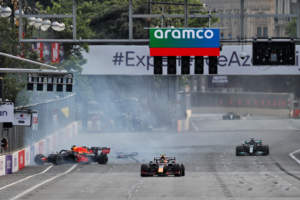Up Next

The trouble with tyres is that it has always been difficult to strike the right balance between performance and durability. It doesn’t matter which manufacturer or even whether there was tyre competition, we have always had these problems.
Look back to the 1986 Australian Grand Prix when Nigel Mansell had a Goodyear rear-left tyre failure while fighting with his Williams team-mate Nelson Piquet and McLaren’s Alain Prost for the world championship.
Or Giancarlo Fisichella in our own Jordan 197 while running second at Hockenheim in 1997, and in 2005, Ralf Schumacher’s rear tyre failure at Indianapolis that ultimately led to the Michelin teams not competing in the race and leaving six cars to take the start.
These are just three prime examples that leap to mind through the years, but there are many more. Some will have been caused by tyre damage, some from misuse and some from being a little borderline on durability for the duty cycle they are being put through.
If there was one thing that refuelling brought to the show, it was the fact that it was faster to do shorter stints on low fuel so the tyres were very seldom used for long durations. There were still tyre problems with graining and blistering, but they could be managed.
When we had refuelling, the cars would never weigh more than around 700kg. That’s a 625kg car-and-driver combination plus 75kg of fuel, which would have been a high fuel load. Now, the cars off the start line will weigh 840-850 kilos and with the aerodynamic loads they produce, braking and cornering forces have increased dramatically. Combine that with the torque that these power units produce and the tyre gets a pounding in every direction possible.
All that said, any component that is used in any discipline must be up to the job. There will always be some level of debris at all race tracks, so the tyre needs to be robust enough to be able to withstand that to a certain level.
After the race, Pirelli’s F1 boss Mario Isola revealed that Lewis Hamilton had a cut in his rear-left hard-compound tyre from his second stint. This was quite a lengthy cut, but not deep enough to go through the tread and lead to a loss of air.
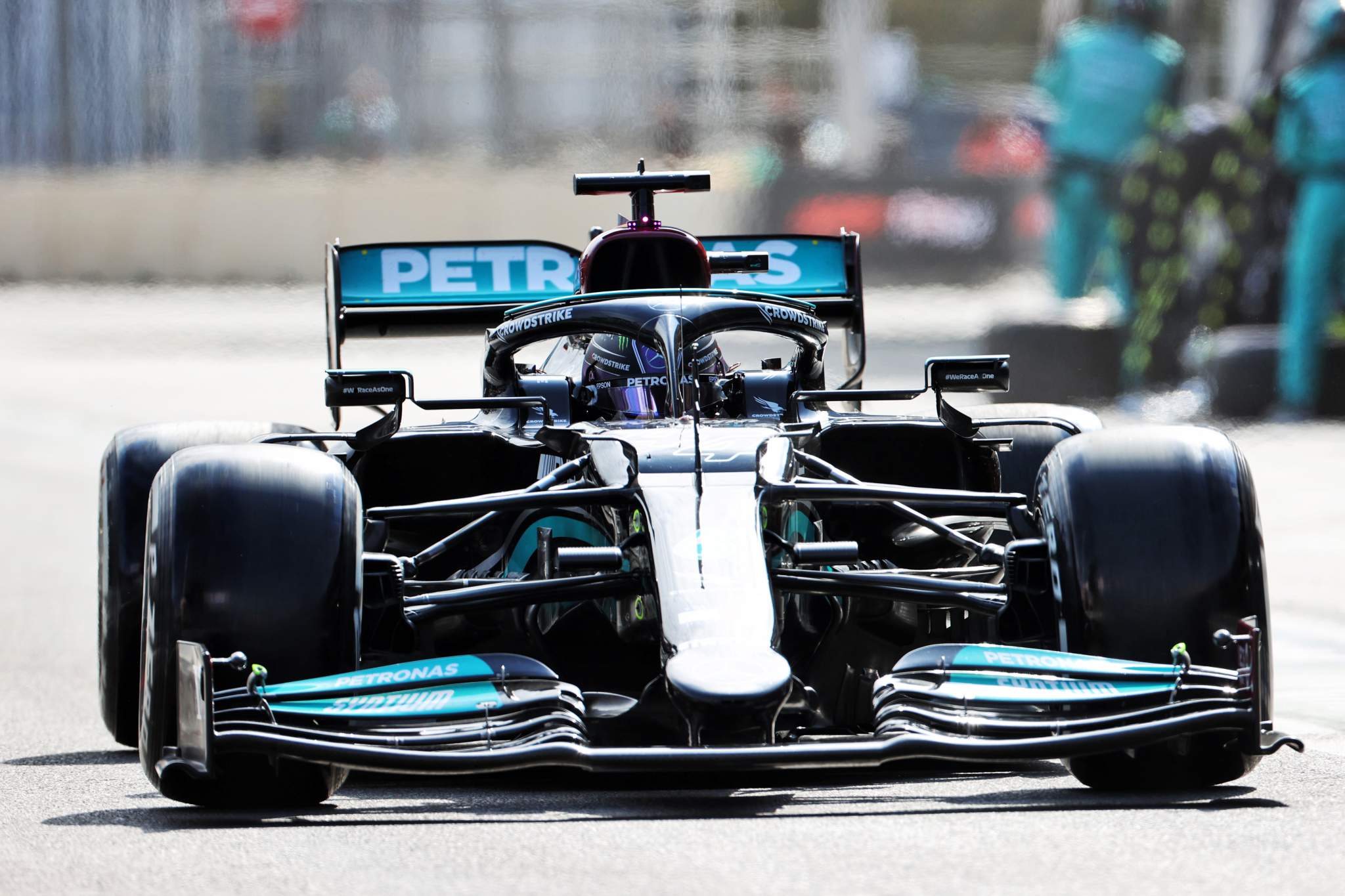
I don’t think this kind of cut on Hamilton’s tyre is uncommon. When you consider that Max Verstappen was leading the race when he crashed, with Hamilton running third, he would have had to go over the debris from the Red Bull at least once and probably twice before they started to use the pitlane.
The teams have very sophisticated tyre pressure and temperature sensors on the cars and should be able to identify a deflation before it is catastrophic. Both Red Bull and Aston Martin, who suffered the earlier failure on Lance Stroll’s car, have stated they saw no indication of a problem before the accidents.
If you look at the footage of Verstappen’s accident, the black lines from the rear tyre start when the tyre deflates. He was fine before this, so in the car he had no idea anything was wrong.
Also, from an investigation point of view, neither car travelled very far after the tyre failure, so the damage to the tyre will be from the failure and not induced by driving to the pits.
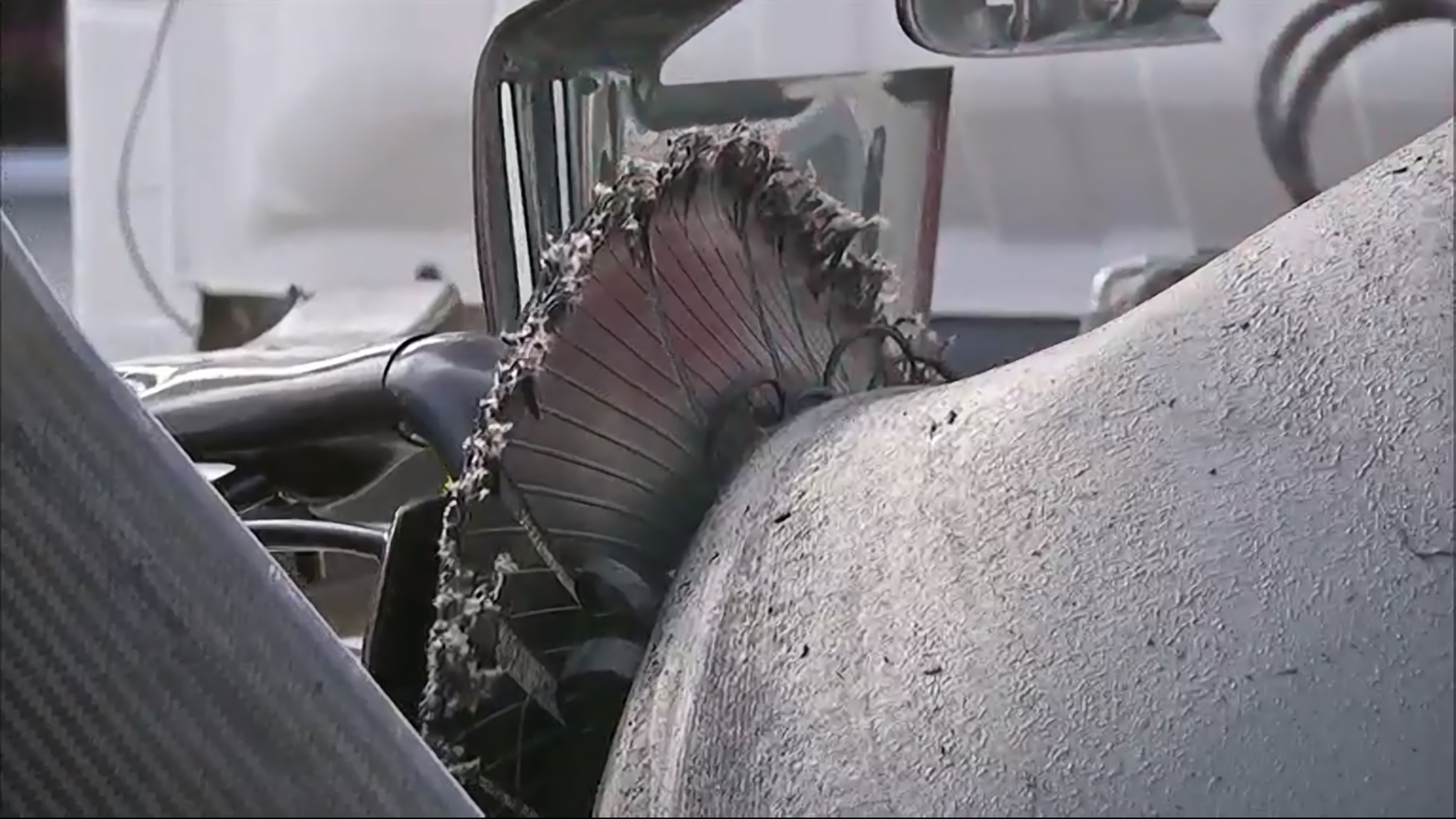
Looking at Stroll’s tyre (above), he had started the race on the hards and ran for 31 laps before the failure. You see a small amount of graining on the tread, but no real problem.
The fibres connecting the inner sidewall to the tread band have failed. This is the area of the tyre that suffers most from cornering and traction loads, but it also suffers just going down the straight, especially in Baku.
Pirelli issue a maximum tyre temperature that the teams can warm the tyres to in the blankets, which was 100C fronts and 80C rears. They also issue a minimum pressure measured when tyres come out of those blankets.
For the Friday in Baku, it was 20psi fronts, 19psi rears. For Saturday, it went up to 20psi rears. There must have been a reason for this and it’s normally that Pirelli would have detected some potential delamination in this area. As this is the only tool to tackle the problem, Pirelli raised the pressure.
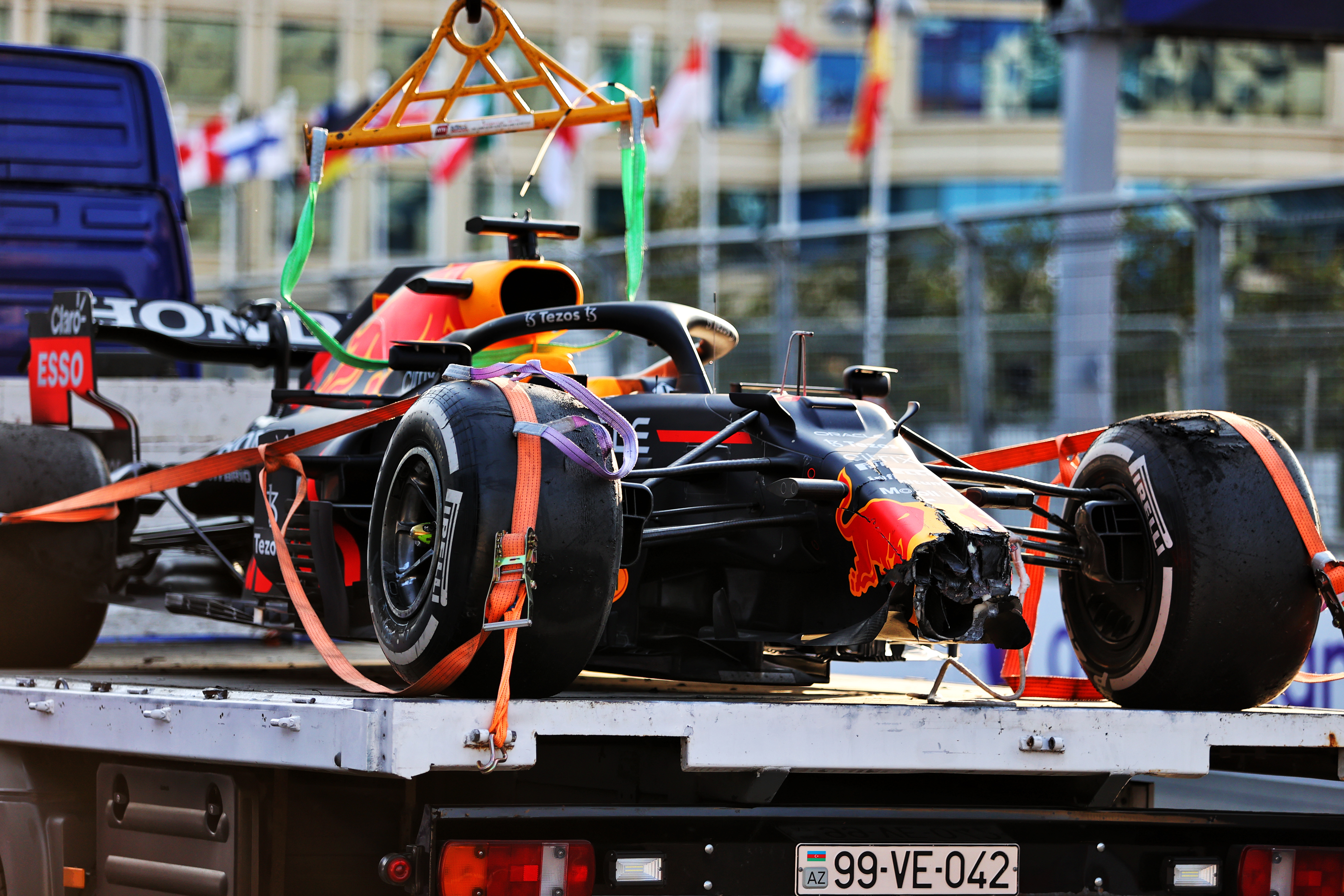
Pirelli also issues a maximum end-of-straight camber both front and rear. This was set at -3.5 degrees front and -2.0 degrees rear. Negative camber is when the top of the tyre leans inwards.
The inner shoulder of both the front and especially the rear tyres get a difficult time on the straights, especially in Baku with a 2.2-kilometre straight. The car is travelling down that straight at speeds up to 210mph.
With the drag of the car and the torque of these engines fighting each other, all of this torque is being put through this area of the tyre. On top of this, with the aero load forcing the car towards the ground, the camber will be at its maximum angle for a very long time.
Verstappen’s failure happened at more or less the same lap count as Stroll’s, so there is some correlation there. However, he had the period when the safety car was out for Stroll’s accident, so the tyres during that period would have had an easier time. But then again, he was leading so he was in a faster car and therefore inducing higher loads on the tyres.
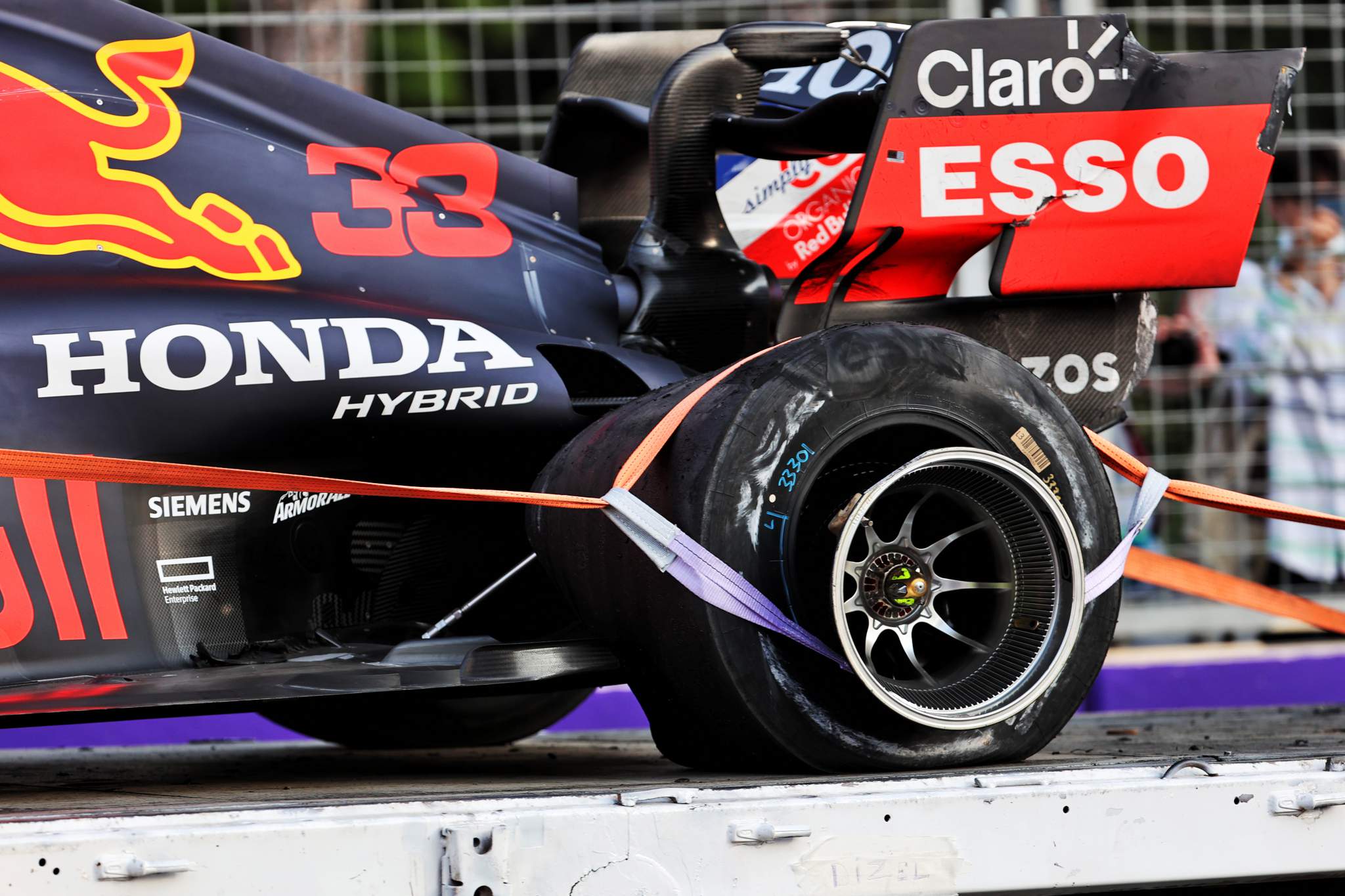
For me, the biggest thing was that because he was leading he didn’t have the use of the DRS on that long straight, so his tyres were having to cope with the maximum downforce load, which induced the maximum camber all the way down that 2.2km straight.
The teams will fight it, but if I was Pirelli I would be reducing the amount of camber, especially on the rears, by a significant amount. Paul Ricard has a long straight and the last thing anyone needs, especially when we have these budget restrictions, is another couple of million-pound accidents.
However, they might find that drawing pin or shard of carbonfibre that was left on the track that explains it all.





